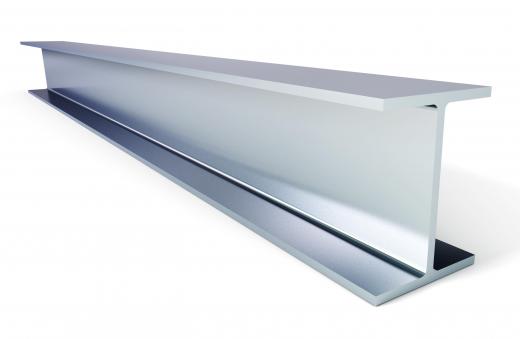A crossbeam is used in the construction of a building and is designed to support a floor or a ceiling. The crossbeam sits on a ledge of concrete when used over a basement and on a wooden support built into floor or ceiling joists when used in the framing stage of construction. Typically made of laminated wood, reinforced concrete or steel I-beam, a crossbeam is able to support a great deal of weight over a very long span. To aid the crossbeam in its role, steel supports known as floor jacks are placed at intervals under the crossbeam to prevent sagging.
In early construction days, old-growth forests had trees large enough that a crossbeam was often made by creating a single large beam from a single log. Many of the early American barns on farms used crossbeam systems that included beams spanning the width of the barn. Modern beams are created by nailing and gluing multiple boards together to create one thick crossbeam. The reason this is done is that available lumber is unable to produce a single beam from the relatively new forest growth.

When using a laminated lumber beam, it is imperative that the seams or joints from the different lengths of lumber be staggered and not aligned. By staggering the joints, the beam gains strength and will resist bowing or twisting. Often, a piece of plywood is sandwiched between some of the boards to add in the structural integrity of the beam. The plywood, made up of many thin laminates glued together, is often stronger than a piece of finished lumber that has all of its grain running in a single direction.
When using steel for the beam, the most common type of steel is the I-beam. The I-beam allows the beam to have a flat face to sit upon the supports while also having a flat face to build the floor upon. The strength of the I-beam comes from the vertical component of the beam while the flat horizontal elements also provide resistance to bowing or flexing. Often a slight pre-load is placed on the steel beam, causing it to arch slightly when set into position. The process of placing the flooring materials onto the I-beam will cause it to level out under the weight.
Concrete beams reinforced with iron bar and wire mesh are often cast with a slight arch also. This causes the floor to remain level once the weight of the flooring is placed upon it. The crossbeam allows a greater area to be constructed without walls being needed to support it. Thus, larger rooms and open spaces can be designed into a building by an architect.
